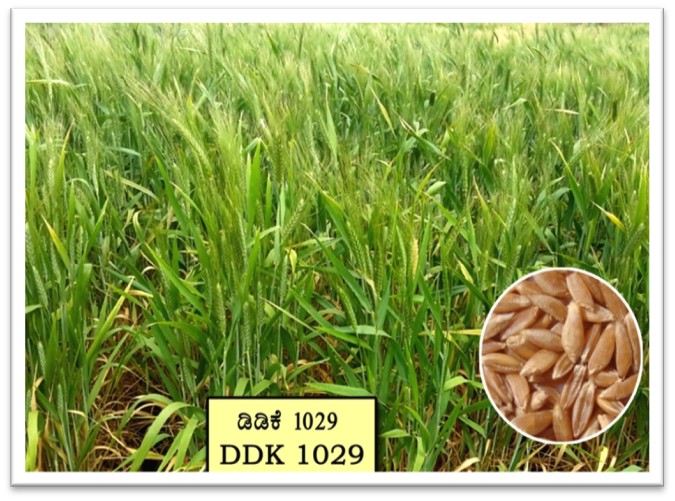DDK-1029 (Wheat)

Background:
Peninsular zone is unique in cultivation with respect to dicoccum wheat cultivation. Its cultivation is restricted to peninsular zone and parts of southern hill zone. It is nutritionally rich because of presence of higher protein content, more dietary fiber, resistant starch and high therapeutic value. The food prepared out of this wheat has high satiety value, unique flavor and good keeping quality. The cultivation of this wheat has history, which is the first cultivated variety in India and carries most of the wild species traits like tall and lodging type, non-free threshability of seeds and poor productivity and most suitability to low input condition. The dicoccum wheat growing farmers predominantly cultivated local types. This necessitated the development of high yielding dicoccum wheat varieties.
Technology Details:
To improve the yield potential and lodging tolerance, semi dwarf variety DDK 1029 was developed. It is most suitable to timely sown irrigated condition of Peninsular India. Because of semi-dwarf nature, it is tolerant to lodging and high yielding and early maturing to local types. It is best suitable both for chapati and macaroni preparation. It has low glyceamic index and hence most suitable for diabetic patients.
Name of crop DDK-1029 (dicoccum wheat)
Parentage DDK-1012/HW-1093//276-15
Year of release
(CSC on CSN & RVAC) 2007
Gazette Notification Details S.O.1703 (E) 05-10-2007
Yield (t/ha) 45-46 q/ha
Season November Ist Fortnight
Condition Irrigated Condition
Area of adoption Peninsular zone (Karnataka and Maharashtra)
Maturity Group 100 to 105 days
Reaction to major diseases and insects Resistance to diseases, tolerance to heat stress
Other remarks Excellent grain quality, nutritional and therapeutic value. Semolina, Chapati, Dhalia, Macaroni and Pasta products


